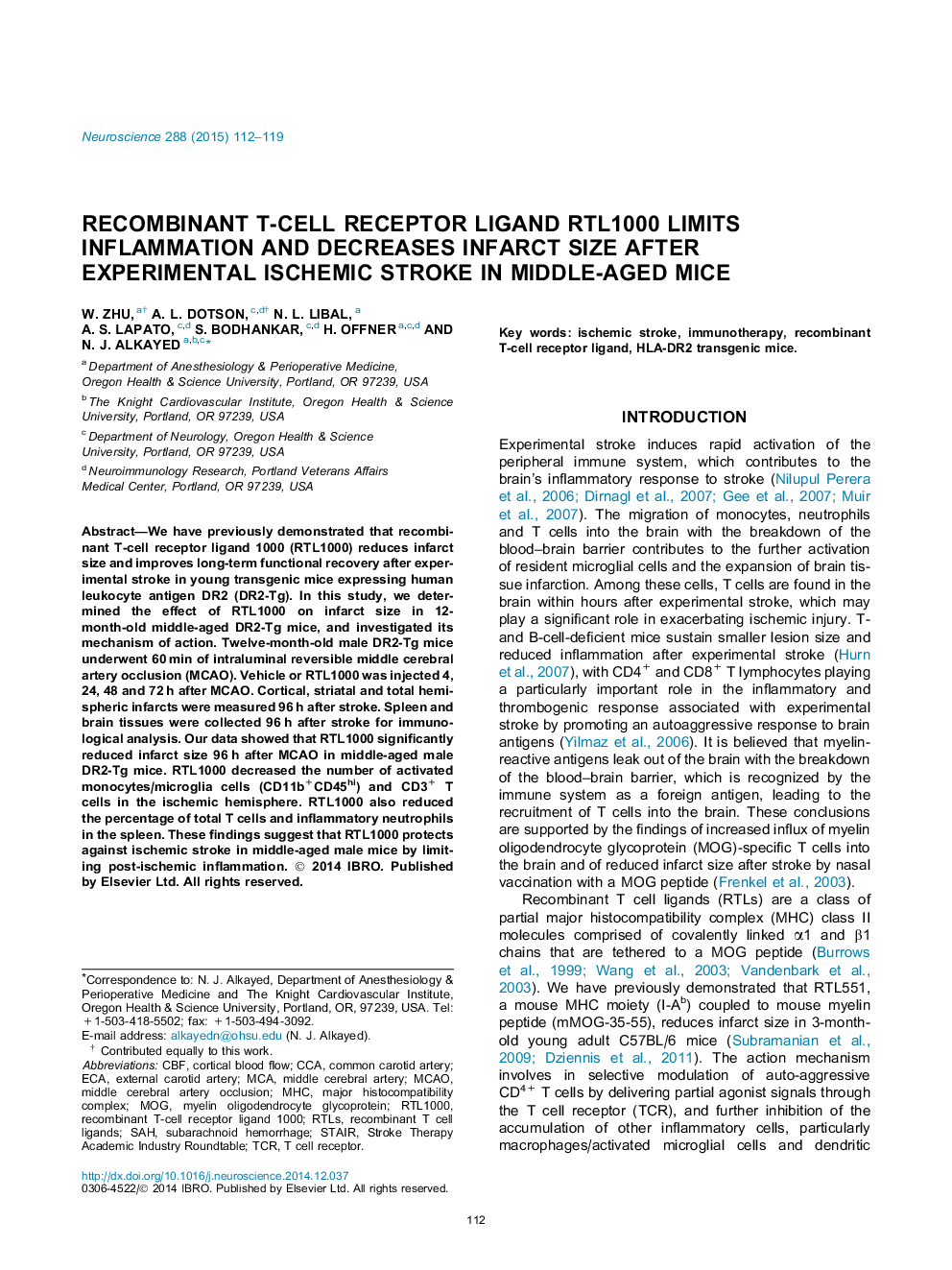| Article ID | Journal | Published Year | Pages | File Type |
|---|---|---|---|---|
| 4337506 | Neuroscience | 2015 | 8 Pages |
•The effect of immune modulator RTL1000 was tested in humanized transgenic DR2-Tg mice.•RTL1000 reduces infarct size after stroke in 12-month old DR2-Tg mice.•Neuroprotection by RTL1000 is linked to modulation of post-ischemic inflammation.
We have previously demonstrated that recombinant T-cell receptor ligand 1000 (RTL1000) reduces infarct size and improves long-term functional recovery after experimental stroke in young transgenic mice expressing human leukocyte antigen DR2 (DR2-Tg). In this study, we determined the effect of RTL1000 on infarct size in 12-month-old middle-aged DR2-Tg mice, and investigated its mechanism of action. Twelve-month-old male DR2-Tg mice underwent 60 min of intraluminal reversible middle cerebral artery occlusion (MCAO). Vehicle or RTL1000 was injected 4, 24, 48 and 72 h after MCAO. Cortical, striatal and total hemispheric infarcts were measured 96 h after stroke. Spleen and brain tissues were collected 96 h after stroke for immunological analysis. Our data showed that RTL1000 significantly reduced infarct size 96 h after MCAO in middle-aged male DR2-Tg mice. RTL1000 decreased the number of activated monocytes/microglia cells (CD11b+CD45hi) and CD3+ T cells in the ischemic hemisphere. RTL1000 also reduced the percentage of total T cells and inflammatory neutrophils in the spleen. These findings suggest that RTL1000 protects against ischemic stroke in middle-aged male mice by limiting post-ischemic inflammation.
